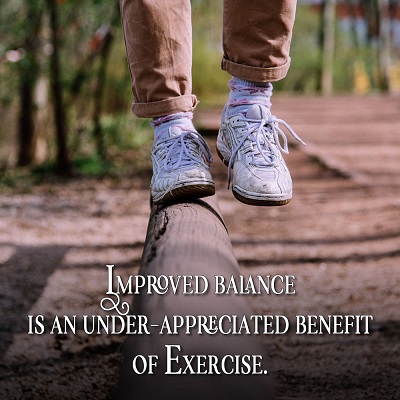 Balance or stability might not be the most common reason people go to the gym or start an exercise routine. It’s a lot more common to hear people go to the gym and exercise so they can lose some weight, get healthier, or become stronger, but rarely do we hear people say, “I exercise to work on my balance or stability.”
Balance or stability might not be the most common reason people go to the gym or start an exercise routine. It’s a lot more common to hear people go to the gym and exercise so they can lose some weight, get healthier, or become stronger, but rarely do we hear people say, “I exercise to work on my balance or stability.”
Balance is one of the most important and also among the greatest benefits people can get from exercise. However, the reality is that it isn’t given as much focus. Or at least, it’s not as commonly acknowledged as other fitness goals like developing strength, endurance, or flexibility.
What are Balancing Exercises For?
Balancing exercises mainly work to improve our core muscles. As the core is our body’s main balance center, having a strong core allows us to gain more control over our body, maintain a good body posture, and overall, increase our body’s movement capabilities.
On a very practical level, improved stability or sense of body balance can aid us in our daily activities, from carrying loads of items, walking, going up and down the stairs, as well as running and making other athletic activities easier.
Having a good balance also helps improve our fitness level and health, generally speaking. A good sense of balance can help prevent or minimize the risk of injury, or the tendency to experience a bad fall; this one is especially crucial amongst older adults.
Who Can Benefit from Balancing Exercises?
Knowing how balance works and how important it can really be for us, it’s easy to see why balance is very important amongst older people. Balance minimizes the risk of injuries and helps prevent accidents such as a bad fall. But older people are not the only ones who can truly benefit and improve their balance or stability; it is definitely advantageous in daily life for everyone.
Balance is just as important for young kids. It can help them develop and gain more body awareness. It can also be a fun learning activity for children when integrated into some forms of learning such as whenever they’re learning new vocabularies or understanding and practicing their mathematical skills.
Balance is especially important for people with an athletic lifestyle, as it can enable them to have better control over their bodies. Gaining coordination and fluidity in movement matters a lot and helps prevent injuries while engaging in an active and mobile lifestyle. Balance is also very essential for those stricken with an illness like Parkinson’s disease, as it helps them maintain mobility, independence, and good quality of life, in spite of the illness.
5 Exercises That Can Help Improve Balance
1 – Balancing on One Leg
This is one of the most common balancing exercises and something that almost anyone can do. It involves standing with your feet apart and your hands on your hips for balance. Then lift one foot off the floor. Don’t lift it straight out in front of you. Slightly bend your knee so your foot is behind you. Once in this position, hold steady in place for at least 30 seconds. Return to the starting position and repeat the same movement with the opposite leg. If you need more challenge, balance with your leg on an unstable surface such as a pillow. When it comes to balancing, anything that challenges your center of gravity will improve your balance.
2 – Bean Bag Balancing
Put a bean bag or any similar item on your shoulder or on top of your head. Then walking in a straight line, a zig-zag, or a circle, trying to maintain your posture and keep your balance while holding the bean bag secure. Also try walking backward and stepping side to side, similarly keeping the bean bag from falling.
3 – Tightrope or Plank Walk
Find something to help you walk in a very straight line. Then hold your arms out on both sides. Walk from one end to the next, while staying on the line. Prevent yourself from stepping to the side. Make at least 15 steps.
4 – Musical Statues
Balancing is great for anyone of all ages, including kids. Musical statues is a great exercise to develop it. Play some music and encourage the kids to dance and move along with it. When the music stops, they should freeze in place no matter their position. Stop the music abruptly and hold it for a few seconds to encourage them to stay in place, freezing in a balancing pose.
5 – Weight Shifts
Weight shifts can be done by standing with your feet apart, and your weight equally distributed on both legs. Then shift your weight on the right side, lifting your left foot slightly off the floor. Hold this position for at least 30 seconds. Once done, return to the starting position and repeat the same movements on the opposite side.






